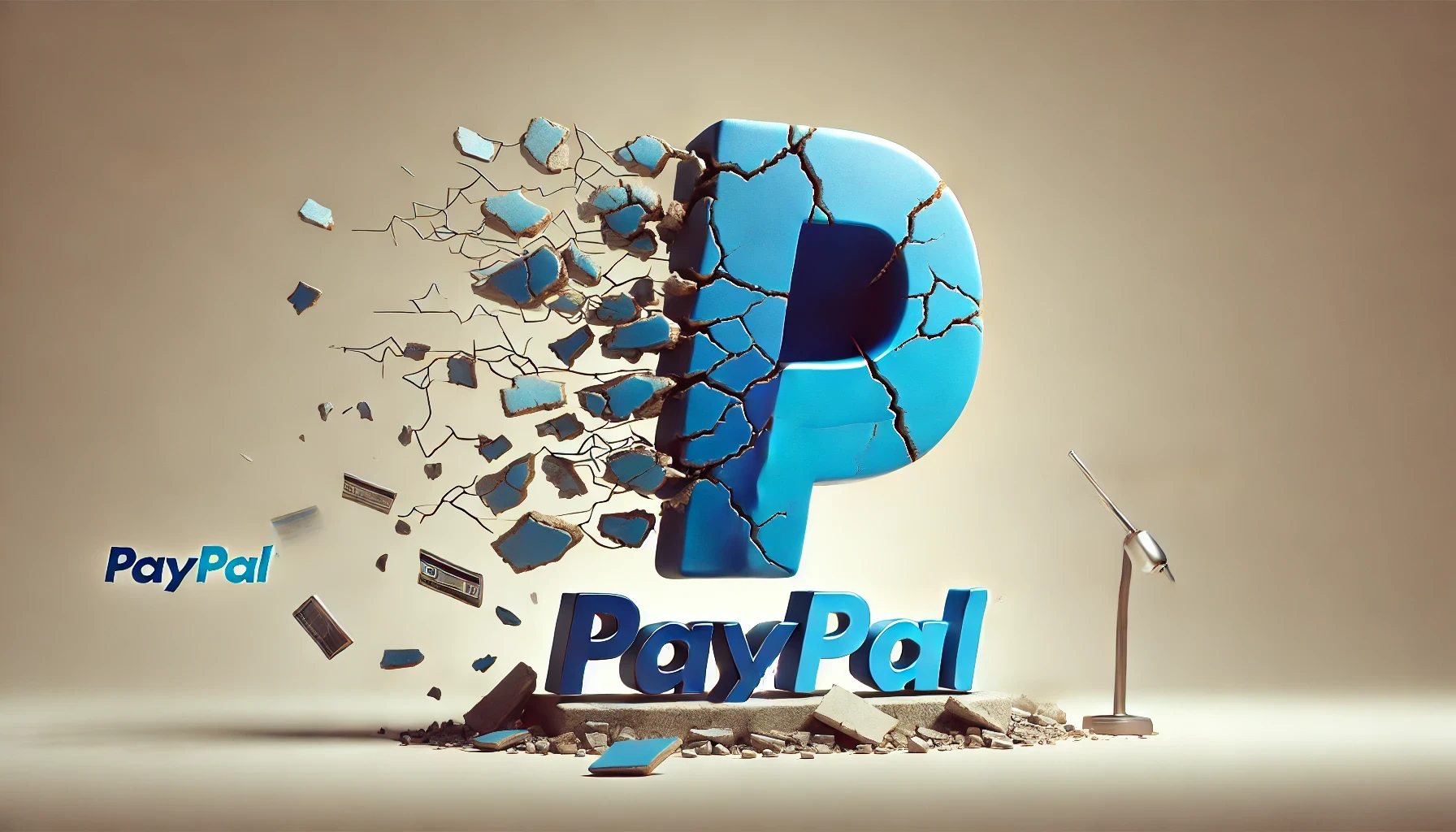Blog
Tips, trends, and more for managers, agencies, and brands.


Blog
Tips, trends, and more for managers, agencies, and brands.


Blog
Tips, trends, and more for managers, agencies, and brands.


Blog
Tips, trends, and more for managers, agencies, and brands.


Blog
Tips, trends, and more for managers, agencies, and brands.



How EU VAT reclaim works when working with influencers and other freelancers
EU VAT compliance and reclaim process when working with influencers and other feeelancers
Apr 30, 2025

How UK VAT reclaim works when working with influencers and other freelancers
How to setup a process to comply with UK VAT and reclaim process when working with influencers and other feeelancers
Feb 25, 2025

2024 Year-End Wrap-Up: Lumanu’s Year of Improving Payments for Marketing Teams
2024 Year-End Wrap-Up: Lumanu’s Year of Improving Payments for Marketing Teams
Dec 27, 2024

How To Manage Influencer Marketing Payments: Comparing Common Approaches
Scaling influencer marketing programs requires building a robust processes
Dec 16, 2024

Best alternative to PayPal for influencer payments?
PayPal seems like a convenient way to pay influencers but over time cracks start to show...
Oct 29, 2024

Using BILL for Influencer, Affiliate, and UGC Creator Payments
BILL was built for the Finance team, not for influencers or the marketers who partner with them...
Aug 16, 2024

How ColourPop scaled their creator marketing program
Michelle Song, Director of Social at ColourPop on the importance of creator relationships and how to scale.
Aug 5, 2024

Using Tipalti for Influencer, Affiliate and UCG Creator payments
Tipalti was built for the Finance team, not for influencers or the marketers who partner with them...
Jul 31, 2024

How to pay creators and freelancers if your company uses SAP Ariba
This guide walks through step by step details for onboarding creators, influencers and other freelancers in SAP Ariba
Jul 25, 2024

How EU VAT reclaim works when working with influencers and other freelancers
EU VAT compliance and reclaim process when working with influencers and other feeelancers
Apr 30, 2025

How UK VAT reclaim works when working with influencers and other freelancers
How to setup a process to comply with UK VAT and reclaim process when working with influencers and other feeelancers
Feb 25, 2025

2024 Year-End Wrap-Up: Lumanu’s Year of Improving Payments for Marketing Teams
2024 Year-End Wrap-Up: Lumanu’s Year of Improving Payments for Marketing Teams
Dec 27, 2024

How To Manage Influencer Marketing Payments: Comparing Common Approaches
Scaling influencer marketing programs requires building a robust processes
Dec 16, 2024

Best alternative to PayPal for influencer payments?
PayPal seems like a convenient way to pay influencers but over time cracks start to show...
Oct 29, 2024

Using BILL for Influencer, Affiliate, and UGC Creator Payments
BILL was built for the Finance team, not for influencers or the marketers who partner with them...
Aug 16, 2024

How ColourPop scaled their creator marketing program
Michelle Song, Director of Social at ColourPop on the importance of creator relationships and how to scale.
Aug 5, 2024

Using Tipalti for Influencer, Affiliate and UCG Creator payments
Tipalti was built for the Finance team, not for influencers or the marketers who partner with them...
Jul 31, 2024

How to pay creators and freelancers if your company uses SAP Ariba
This guide walks through step by step details for onboarding creators, influencers and other freelancers in SAP Ariba
Jul 25, 2024

How EU VAT reclaim works when working with influencers and other freelancers
EU VAT compliance and reclaim process when working with influencers and other feeelancers
Apr 30, 2025

How UK VAT reclaim works when working with influencers and other freelancers
How to setup a process to comply with UK VAT and reclaim process when working with influencers and other feeelancers
Feb 25, 2025

2024 Year-End Wrap-Up: Lumanu’s Year of Improving Payments for Marketing Teams
2024 Year-End Wrap-Up: Lumanu’s Year of Improving Payments for Marketing Teams
Dec 27, 2024

How To Manage Influencer Marketing Payments: Comparing Common Approaches
Scaling influencer marketing programs requires building a robust processes
Dec 16, 2024

Best alternative to PayPal for influencer payments?
PayPal seems like a convenient way to pay influencers but over time cracks start to show...
Oct 29, 2024

Using BILL for Influencer, Affiliate, and UGC Creator Payments
BILL was built for the Finance team, not for influencers or the marketers who partner with them...
Aug 16, 2024

How ColourPop scaled their creator marketing program
Michelle Song, Director of Social at ColourPop on the importance of creator relationships and how to scale.
Aug 5, 2024

Using Tipalti for Influencer, Affiliate and UCG Creator payments
Tipalti was built for the Finance team, not for influencers or the marketers who partner with them...
Jul 31, 2024

How to pay creators and freelancers if your company uses SAP Ariba
This guide walks through step by step details for onboarding creators, influencers and other freelancers in SAP Ariba
Jul 25, 2024

How EU VAT reclaim works when working with influencers and other freelancers
EU VAT compliance and reclaim process when working with influencers and other feeelancers
Apr 30, 2025

How UK VAT reclaim works when working with influencers and other freelancers
How to setup a process to comply with UK VAT and reclaim process when working with influencers and other feeelancers
Feb 25, 2025

2024 Year-End Wrap-Up: Lumanu’s Year of Improving Payments for Marketing Teams
2024 Year-End Wrap-Up: Lumanu’s Year of Improving Payments for Marketing Teams
Dec 27, 2024

How To Manage Influencer Marketing Payments: Comparing Common Approaches
Scaling influencer marketing programs requires building a robust processes
Dec 16, 2024

Best alternative to PayPal for influencer payments?
PayPal seems like a convenient way to pay influencers but over time cracks start to show...
Oct 29, 2024

Using BILL for Influencer, Affiliate, and UGC Creator Payments
BILL was built for the Finance team, not for influencers or the marketers who partner with them...
Aug 16, 2024

How ColourPop scaled their creator marketing program
Michelle Song, Director of Social at ColourPop on the importance of creator relationships and how to scale.
Aug 5, 2024

Using Tipalti for Influencer, Affiliate and UCG Creator payments
Tipalti was built for the Finance team, not for influencers or the marketers who partner with them...
Jul 31, 2024

How to pay creators and freelancers if your company uses SAP Ariba
This guide walks through step by step details for onboarding creators, influencers and other freelancers in SAP Ariba
Jul 25, 2024

How EU VAT reclaim works when working with influencers and other freelancers
EU VAT compliance and reclaim process when working with influencers and other feeelancers
Apr 30, 2025

How UK VAT reclaim works when working with influencers and other freelancers
How to setup a process to comply with UK VAT and reclaim process when working with influencers and other feeelancers
Feb 25, 2025

2024 Year-End Wrap-Up: Lumanu’s Year of Improving Payments for Marketing Teams
2024 Year-End Wrap-Up: Lumanu’s Year of Improving Payments for Marketing Teams
Dec 27, 2024

How To Manage Influencer Marketing Payments: Comparing Common Approaches
Scaling influencer marketing programs requires building a robust processes
Dec 16, 2024

Best alternative to PayPal for influencer payments?
PayPal seems like a convenient way to pay influencers but over time cracks start to show...
Oct 29, 2024

Using BILL for Influencer, Affiliate, and UGC Creator Payments
BILL was built for the Finance team, not for influencers or the marketers who partner with them...
Aug 16, 2024

How ColourPop scaled their creator marketing program
Michelle Song, Director of Social at ColourPop on the importance of creator relationships and how to scale.
Aug 5, 2024

Using Tipalti for Influencer, Affiliate and UCG Creator payments
Tipalti was built for the Finance team, not for influencers or the marketers who partner with them...
Jul 31, 2024

How to pay creators and freelancers if your company uses SAP Ariba
This guide walks through step by step details for onboarding creators, influencers and other freelancers in SAP Ariba
Jul 25, 2024
Built for marketers. Loved by finance teams.

Built for marketers. Loved by finance teams.

Built for marketers. Loved by finance teams.

Built for marketers. Loved by finance teams.

Built for marketers. Loved by finance teams.

Platform
Add-ons
Solutions
For all roles
For all industries
© 2025 Lumanu, Inc. All Rights Reserved.
Lumanu, Inc. is a financial technology company and not a bank
Banking services provided by i3 bank; Member FDIC
Platform
Vendor Experience & Support
Add-ons
Solutions
For all roles
For all industries
© 2025 Lumanu, Inc. All Rights Reserved.
Lumanu, Inc. is a financial technology company and not a bank
Banking services provided by i3 bank; Member FDIC
Platform
Vendor Experience & Support
Add-ons
Solutions
For all roles
For all industries
© 2025 Lumanu, Inc. All Rights Reserved.
Lumanu, Inc. is a financial technology company and not a bank Banking services provided by i3 bank; Member FDIC
Platform
Vendor Experience & Support
Add-ons
Solutions
For all roles
For all industries
© 2025 Lumanu, Inc. All Rights Reserved.
Lumanu, Inc. is a financial technology company and not a bank
Banking services provided by i3 bank; Member FDIC
Platform
Vendor Experience & Support
Add-ons
Solutions
For all roles
For all industries
© 2025 Lumanu, Inc. All Rights Reserved.
Lumanu, Inc. is a financial technology company and not a bank
Banking services provided by i3 bank; Member FDIC

